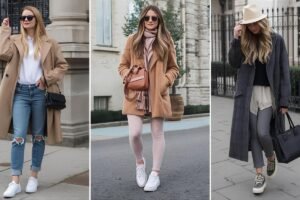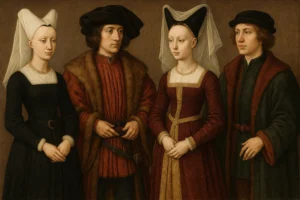In the ever-evolving world of fashion, few colors possess the timeless elegance and sophisticated appeal of burgundy and bordeaux. These deep, wine-inspired hues have transcended seasonal trends to become permanent fixtures in the wardrobes of style-conscious individuals worldwide. Whether you’re preparing for an important business meeting, planning a romantic evening out, or simply looking to elevate your everyday look, mastering the art of burgundy styling can transform your entire aesthetic.
Burgundy and bordeaux colors represent more than just fashion choices—they embody confidence, maturity, and refined taste. These rich, velvety tones draw their inspiration from the world’s finest wines, bringing warmth and depth to any outfit. While often used interchangeably, burgundy typically leans slightly more toward purple undertones, whereas bordeaux embraces deeper red characteristics. Both shades, however, share the remarkable ability to complement virtually every skin tone and body type.
The resurgence of wine-colored fashion in recent years has been nothing short of remarkable. From high-fashion runways in Paris and Milan to street-style photography in New York and Tokyo, these luxurious hues dominate the fashion landscape. Interior designers have also embraced these tones, creating cohesive lifestyle aesthetics that extend from clothing to home decor. Understanding how to incorporate these colors effectively can revolutionize your personal style and help you create memorable, impactful looks that command attention and respect.
This comprehensive guide will walk you through ten essential burgundy and bordeaux styling tricks that professionals use to create stunning, cohesive outfits. Whether you’re a fashion novice or a seasoned style enthusiast, these techniques will empower you to confidently incorporate these magnificent colors into your daily wardrobe rotation.
1. Master the Art of Monochromatic Burgundy Outfits
Creating a monochromatic burgundy look represents one of the most powerful styling techniques in modern fashion. This approach involves combining different shades and textures of burgundy and bordeaux within a single outfit, creating visual interest through subtle variations rather than contrasting colors.
Start with a burgundy base layer—perhaps a silk blouse or fitted turtleneck—then layer with a bordeaux blazer or cardigan. Complete the ensemble with deep wine-colored trousers or a flowing midi skirt. The key to successful monochromatic dressing lies in playing with textures and finishes. Mix matte fabrics with glossy materials, combine smooth silks with textured knits, or pair leather accents with soft cashmere pieces.
This burgundy styling technique creates an elongated silhouette that appears both sophisticated and effortlessly chic. The seamless flow of color draws the eye vertically, creating a slimming effect while making a bold fashion statement. Fashion icons like Victoria Beckham and Olivia Palermo frequently employ this strategy, demonstrating its versatility across various occasions and seasons.
2. Pair Burgundy with Neutral Tones for Timeless Elegance
Burgundy and neutral combinations form the foundation of classic, versatile styling. This pairing allows the richness of wine-inspired colors to shine while maintaining a balanced, approachable aesthetic suitable for both professional and casual settings.
Beige, cream, and camel create warm, harmonious pairings with burgundy tones. A burgundy sweater with camel trousers epitomizes autumn sophistication, while a bordeaux dress paired with a cream coat exudes timeless elegance. Gray offers a cooler alternative, providing a modern, urban edge when combined with these deep reds. A charcoal blazer over a burgundy dress creates professional polish perfect for corporate environments.
Black and white serve as foolproof partners for bordeaux fashion. A burgundy midi skirt with a crisp white shirt delivers classic sophistication, while black jeans paired with a bordeaux leather jacket create an edgy, contemporary vibe. Navy blue, though often overlooked, provides an unexpected yet refined complement to these wine shades, offering depth and richness without overwhelming the senses.
3. Create Stunning Contrast with Complementary Colors
Understanding color theory elevates your burgundy styling from good to exceptional. Complementary color combinations create visual excitement and demonstrate advanced fashion knowledge.
Emerald green and forest green create striking partnerships with burgundy and bordeaux colors. This combination draws inspiration from nature’s autumn palette, where deep reds meet evergreen foliage. A burgundy velvet blazer paired with emerald accessories creates luxurious visual impact perfect for evening events.
Mustard yellow and gold tones provide warm, unexpected contrasts that energize wine-colored outfits. A mustard scarf draped over a burgundy coat adds playful sophistication, while gold jewelry against bordeaux fabric creates opulent glamour. Blush pink and dusty rose offer softer, more romantic alternatives, creating feminine, approachable looks that work beautifully for daytime occasions.
Teal and deep turquoise push boundaries while maintaining sophistication. These jewel tones create fashion-forward combinations that stand out in any setting, demonstrating confidence and creative flair. The key lies in maintaining balance—let one color dominate while using the other as an accent for maximum impact.
4. Leverage Textures to Add Dimension to Burgundy Looks
Texture plays a crucial role in successful burgundy and bordeaux styling. Different fabrics reflect light uniquely, creating depth and visual interest even within monochromatic schemes.
Velvet represents the quintessential burgundy fabric, offering luxurious depth and richness that enhances these wine tones beautifully. A velvet blazer or dress in bordeaux creates instant sophistication suitable for formal occasions. Leather and suede provide edgier alternatives, perfect for creating contemporary, urban looks with lasting impact.
Silk and satin bring luminous elegance to burgundy fashion, catching light beautifully and creating fluid, graceful silhouettes. These fabrics work particularly well for evening wear and special occasions. Contrast these smooth textures with chunky knits, structured wool, or textured tweed for daytime looks that balance refinement with approachability.
Mixing textures within a single outfit creates sophisticated dimension. Try pairing a burgundy silk blouse with wool trousers and a leather belt, or combine a velvet skirt with a cotton sweater and suede boots. These combinations demonstrate fashion expertise while keeping outfits visually engaging.
5. Accessorize Strategically with Burgundy Accents
When incorporating burgundy accessories, strategic placement creates maximum impact without overwhelming your look. Accessories provide an excellent entry point for those hesitant to commit to larger burgundy pieces.
Burgundy handbags serve as versatile statement pieces that complement numerous color palettes. A structured bordeaux tote adds polish to business casual outfits, while a burgundy crossbody bag brings sophistication to weekend casual looks. Shoes in these wine shades create grounded, cohesive outfits—burgundy ankle boots pair beautifully with denim, while bordeaux pumps elevate professional attire.
Scarves, belts, and jewelry in burgundy tones offer flexibility and versatility. A silk burgundy scarf can transform a simple white shirt into a polished ensemble, while a bordeaux leather belt adds visual interest to neutral dresses. Jewelry featuring garnet, ruby, or burgundy-toned stones creates subtle yet impactful accents that tie looks together seamlessly.
6. Season Your Burgundy Wardrobe Throughout the Year
While burgundy and bordeaux reach peak popularity during autumn and winter, these versatile shades work beautifully year-round when styled appropriately for each season.
Spring burgundy styling involves lighter fabrics and brighter complementary colors. Pair a lightweight burgundy cardigan with white jeans and nude sandals, or try a bordeaux floral dress with fresh accessories. These combinations maintain the richness of wine tones while embracing spring’s lighter, more optimistic aesthetic.
Summer presents opportunities for bordeaux swimwear, linen garments, and breezy dresses in these sophisticated hues. A burgundy maxi dress in breathable cotton creates elegant summer evening attire, while bordeaux accessories add unexpected sophistication to predominantly neutral summer wardrobes.
Fall naturally embraces burgundy fashion, with heavier knits, layered looks, and rich textile combinations taking center stage. Winter extends these possibilities through luxurious fabrics like velvet, wool, and cashmere in these warming tones, creating cozy yet refined cold-weather wardrobes.
7. Dress Burgundy Up or Down for Any Occasion
The versatility of burgundy and bordeaux colors allows seamless transitions between casual, professional, and formal settings through strategic styling choices.
For casual looks, incorporate burgundy through relaxed pieces like sweatshirts, joggers, or denim jackets. A bordeaux hoodie paired with light-wash jeans creates approachable weekend style, while burgundy sneakers add unexpected sophistication to athletic-inspired outfits.
Professional environments welcome burgundy styling through structured pieces like blazers, pencil skirts, and tailored trousers. A burgundy suit creates powerful presence in business settings, while a bordeaux blouse under a neutral blazer adds personality while maintaining professionalism.
Evening and formal occasions showcase these wine-inspired colors at their most glamorous. Velvet burgundy gowns, silk bordeaux cocktail dresses, and embellished burgundy separates create memorable formal looks that photograph beautifully and exude confidence.
8. Consider Your Undertones When Choosing Burgundy Shades
Understanding your skin’s undertones ensures you select the most flattering burgundy and bordeaux shades for your complexion, enhancing your natural coloring rather than competing with it.
Cool undertones benefit from burgundy shades with blue or purple bases—think true burgundy leaning toward plum. These tones complement pink-toned skin beautifully, creating harmonious, flattering combinations. Warm undertones shine in bordeaux shades with orange or brown bases, which enhance golden and olive complexions.
Neutral undertones enjoy flexibility in choosing between cooler burgundies and warmer bordeaux shades. Experiment with different variations to discover which tones make you feel most confident and radiant. Pay attention to how different shades affect your complexion—the right burgundy should brighten your face and enhance your natural coloring.
9. Balance Proportions When Styling Burgundy Pieces
Proper proportion balance ensures burgundy outfits create flattering, cohesive silhouettes that enhance your body shape rather than overwhelming it.
When wearing burgundy on top, balance with neutral or lighter bottoms to prevent visual heaviness. A burgundy sweater paired with light gray trousers creates balanced proportions, while a bordeaux blouse with white jeans offers fresh contrast.
Burgundy bottoms pair beautifully with lighter tops, creating grounded, sophisticated looks. Burgundy wide-leg trousers with a cream blouse deliver elegant proportions, while a bordeaux midi skirt with a white turtleneck creates classic, refined styling.
Full burgundy outfits require careful attention to silhouette—ensure proper fit throughout and consider breaking up solid color blocks with accessories in complementary tones. A burgundy jumpsuit accessorized with gold jewelry and nude heels creates balanced, elongating visual lines.
10. Experiment with Prints and Patterns Featuring Burgundy
Incorporating burgundy through prints and patterns adds visual interest while maintaining the sophistication these colors provide. This approach works particularly well for those building confidence with these bold hues.
Floral prints featuring burgundy accents offer romantic, feminine appeal perfect for spring and summer styling. Look for patterns that incorporate burgundy alongside complementary colors like blush, cream, or sage green. Plaid and tartan patterns featuring bordeaux tones create classic, heritage-inspired looks ideal for autumn and winter wardrobes.
Geometric patterns, stripes, and abstract designs incorporating burgundy shades deliver modern, contemporary aesthetics. A burgundy striped shirt offers subtle color incorporation, while an abstract print dress featuring bordeaux creates artistic, conversation-starting style.
When styling patterned pieces, pull accent colors from the print to create cohesive outfits. If your burgundy-patterned dress includes cream accents, pair it with cream shoes and accessories for polished, intentional styling.
Conclusion
Mastering burgundy and bordeaux styling opens endless possibilities for creating sophisticated, memorable outfits that reflect your personal aesthetic while commanding respect and admiration. These timeless wine-inspired colors transcend fleeting trends, offering lasting value in any wardrobe.
The ten styling tricks outlined in this guide provide a comprehensive foundation for confidently incorporating these rich hues into your daily fashion rotation. From monochromatic elegance to strategic accessories, complementary color combinations to texture play, each technique offers unique opportunities to express your style while harnessing the power of these magnificent colors.
Remember that fashion should bring joy and confidence. Experiment with these burgundy styling techniques, adapt them to your personal preferences, and don’t be afraid to push boundaries as you develop your unique interpretation of wine-inspired fashion. With practice and creativity, you’ll discover that burgundy and bordeaux become indispensable components of a versatile, sophisticated wardrobe that serves you beautifully across all seasons and occasions.
Read More: 5 Stunning Wearable Winter Fashion Trends to Try in 2025








